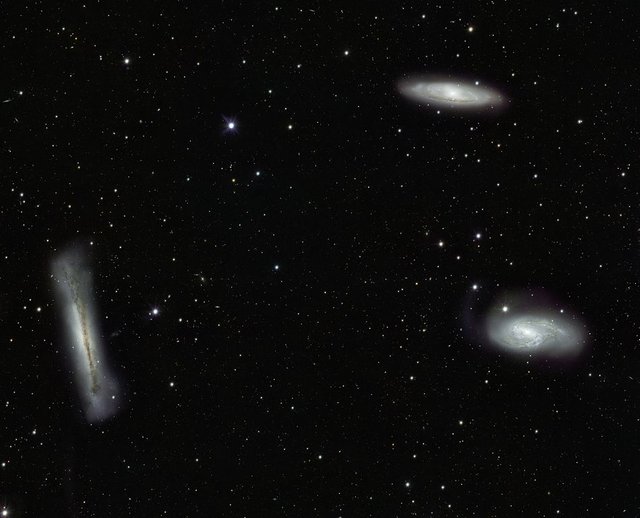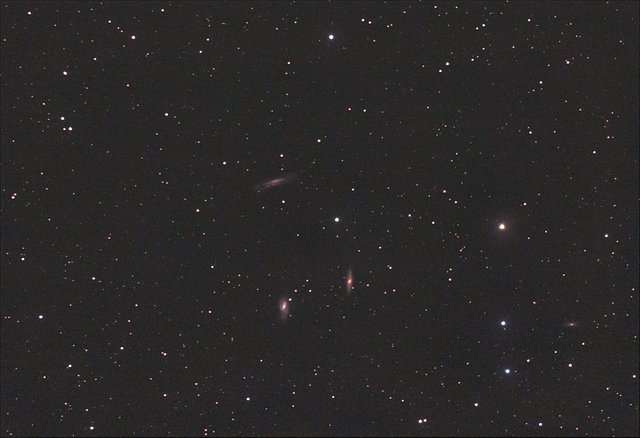Astronomical Observations #33: Leo Triplet
Hello Everyone in the next episode. This time, I will show you 3 galaxies at the same time! Leo Triplet is a small group of galaxies that lies in the constellation of the Leo. The cluster is about 35 million light-years away from us. Group consists of galaxies: M65, M66 and NGC 3628. They are in close proximity to each other in the sky, which allows viewing all three in one field of view of the telescope.

By ESO/INAF-VST/OmegaCAM link [CC BY 3.0 license]
This cluster of galaxies is about 2 degrees on west of the brightest Leo star - Denebola. To find him, we need a dark sky and a telescope with a minimum diameter of 6 inches. The brightness of each galaxy in the group is about +10 magnitude. With the 15 X 70 binoculars there is a chance to see the group as 3 out of focus points, but you need a really dark and pure sky. I suggest mainly telescopic observations. Below is a simulation that shows how these galaxies look in an 8-inch instrument under a rural sky far away from cities polluted with light. Viewing all three galaxies in one field of view requires the use of a wide-angle eyepiece with low magnification.

By Stub Mandrel link [CC BY-SA 3.0 license]
Let me remind you once again that in amateur telescopes the colors are visible only on planets. Objects of the deep sky like nebulae or galaxies shine too weak for the human eye to see the colors. Photographs with a long exposure time, like the first in this article, let you capture colors. Therefore, these simulations may seem unattractive. Believe me, however, that despite the lack of colors, these objects seen in the telescope make a big impression. With a large telescope and a black sky, you can see the view as below, which is remarkably similar to nice, colorful photographs. I recommend you to view these objects on the astronomical rally in your area.

(My modification) Original by Miodrag Sekulic link [CC BY-SA 3.0 license]
Using small magnifications, we can enjoy the view of three galaxies in one field of view. By increasing the magnification, we can look closely at each galaxy. M65 resembles an elongated oval disk with no significant details. M66 has an irregular shape. The most interesting object of the group is the spiral galaxy NGC 3628. Is to set to us sideways. It is visible as a long, blurred line. Larger instruments allow you to see in it a band of dark matter that cuts its disc. The Leo is a typically spring constellation, so I recommend seeing Leo Triplet in spring, when the nights are still long, and the Leo rises high above the southern sky (observing from the northern hemisphere).
Greetings to lovers of Astronomy!
References:

Great post. Regards.
This post has been voted on by the SteemSTEM curation team and voting trail in collaboration with @curie.
If you appreciate the work we are doing then consider voting both projects for witness by selecting stem.witness and curie!
For additional information please join us on the SteemSTEM discord and to get to know the rest of the community!
Beautiful :)
So the redish colors in the second picture is only an effect of the atmosphere. Is that right?
I just didn't remove the colors from this photo. There will be no colors in the observation. Colors in observation can be seen only on the Orion nebula (M42) and in a very large telescope over 20 inches.
I see. So most pictures should be black and white except if you have a huge telescope at your disposal.